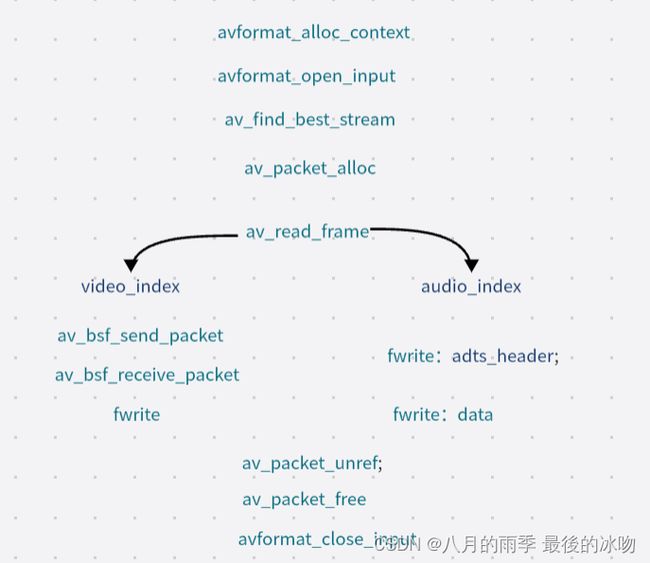FFmpeg--解码:mp4文件解码为音频aac和视频h264
mp4文件解封装:
视频文件(mp4 )–解封装—音频流(aac ), 视频流 (h264)
流程
code
命令行参数: input.mp4 out.h264 out.aac
#include debug:
测试音频流是否加上startcode
1 av_bsf_send_packet(bfs_ctx,pkt);
pkt: data
查看 Memory: 00 00 02 b0
2 fwrite(pkt->data,pkt->size,h264_fd);
pkt->data:
Memory: 00 00 00 01 (startcode)
